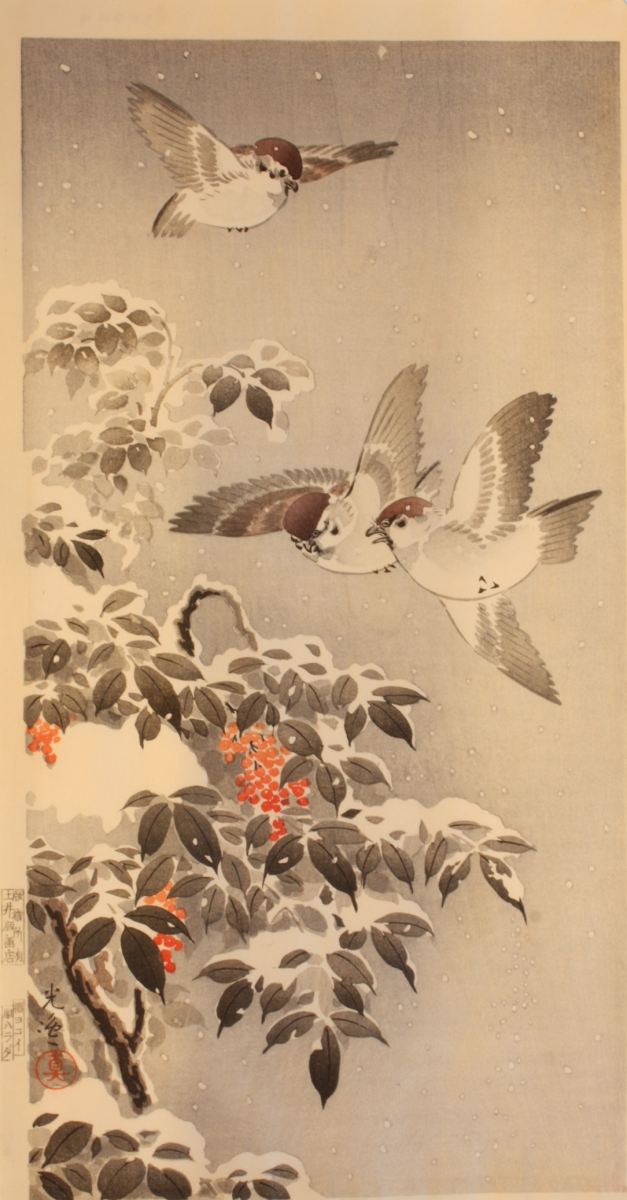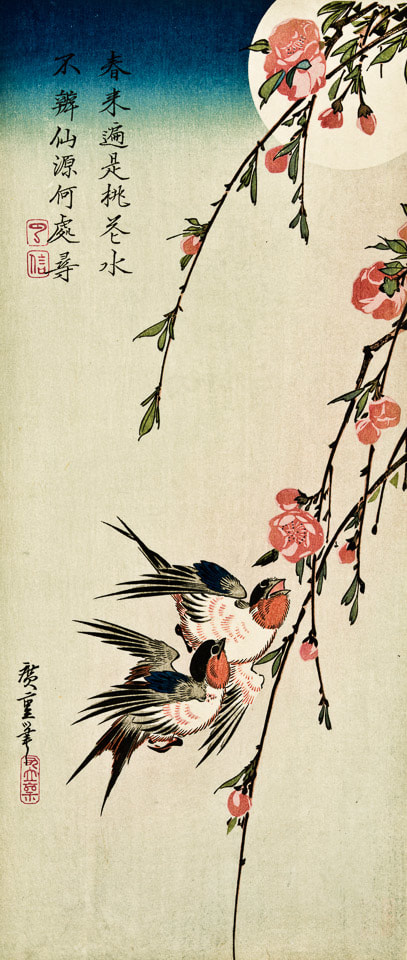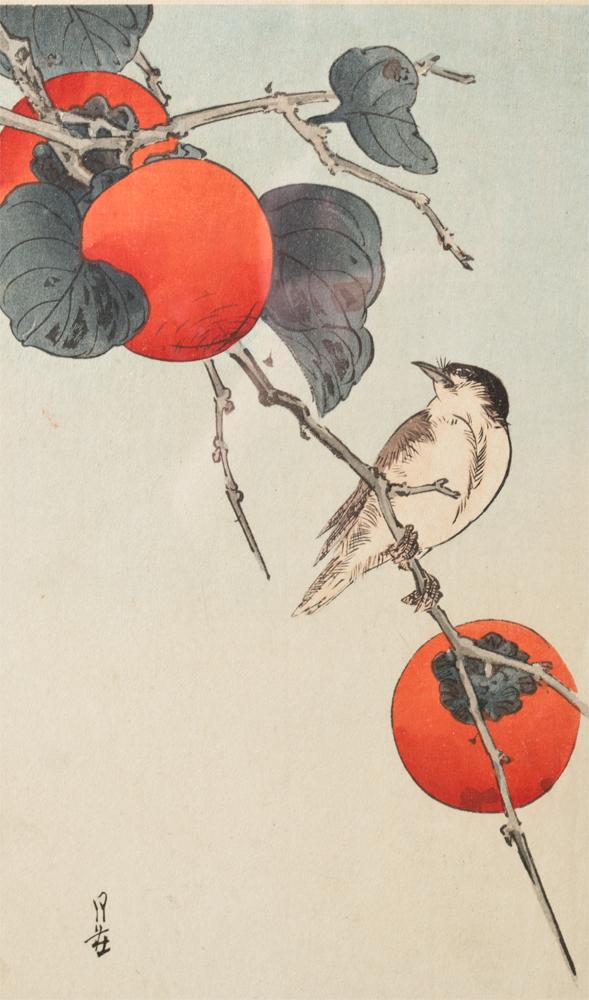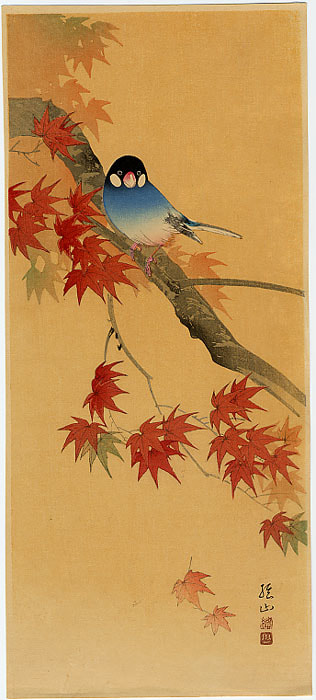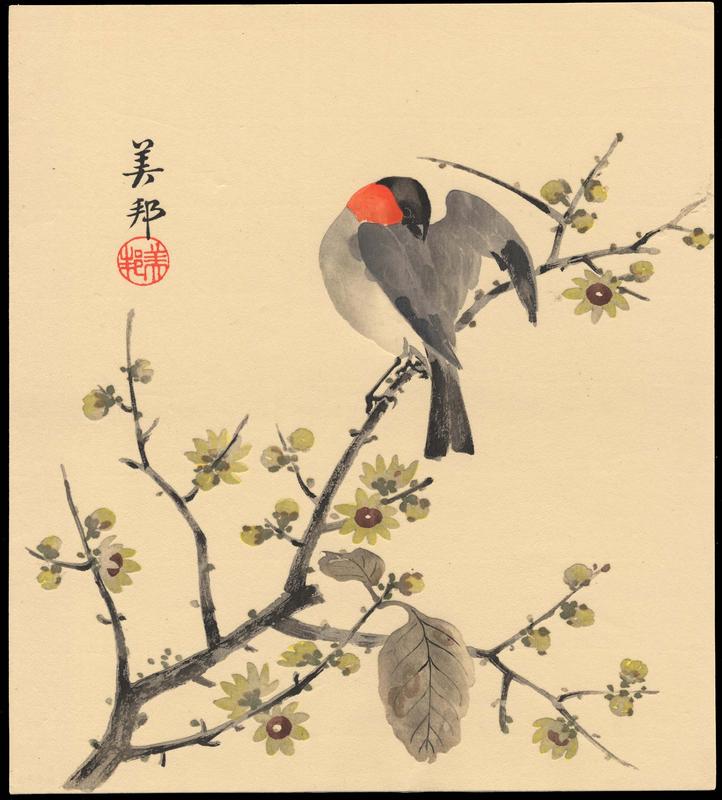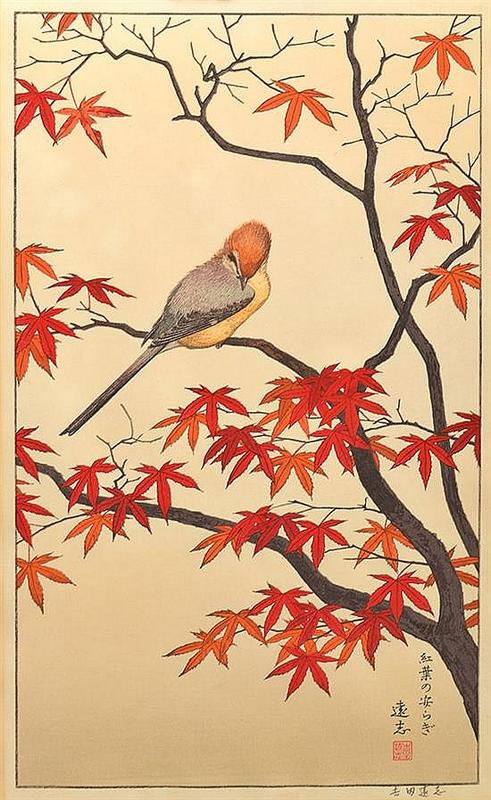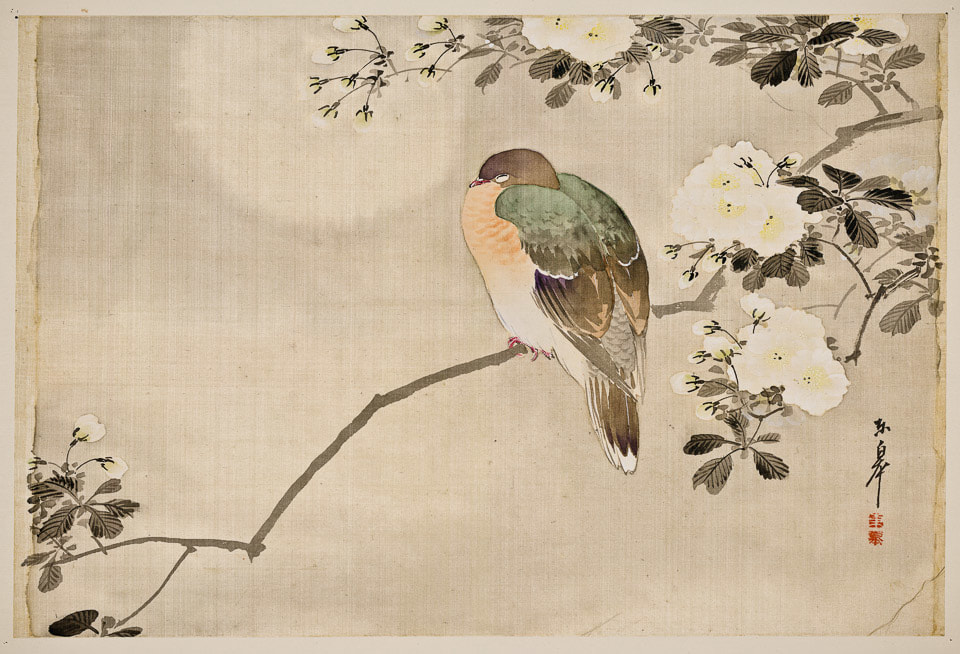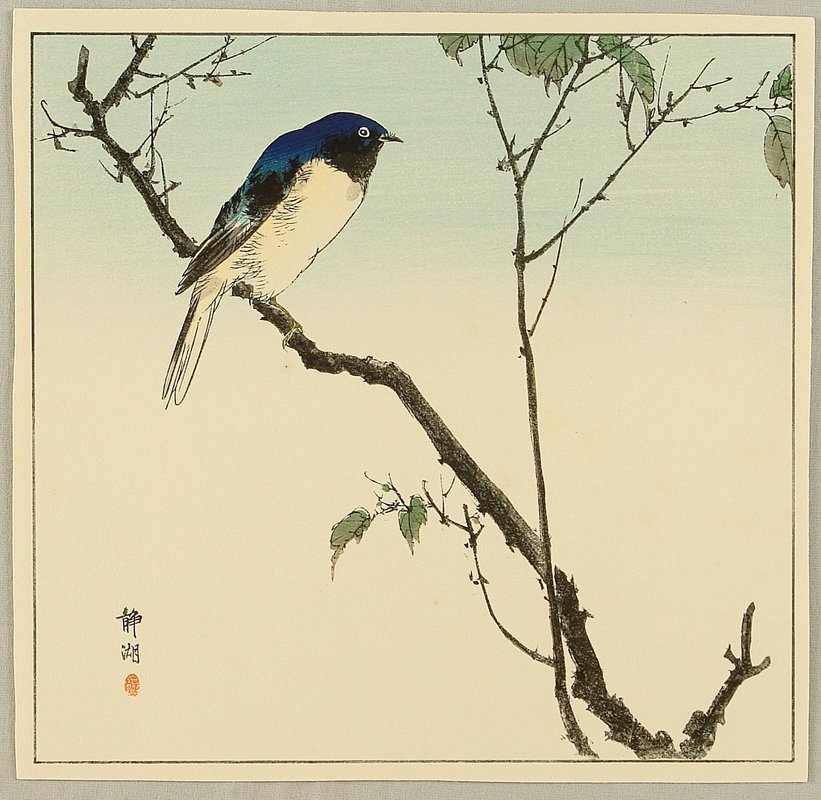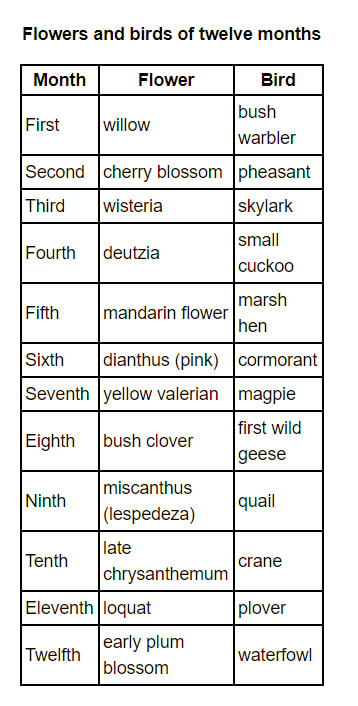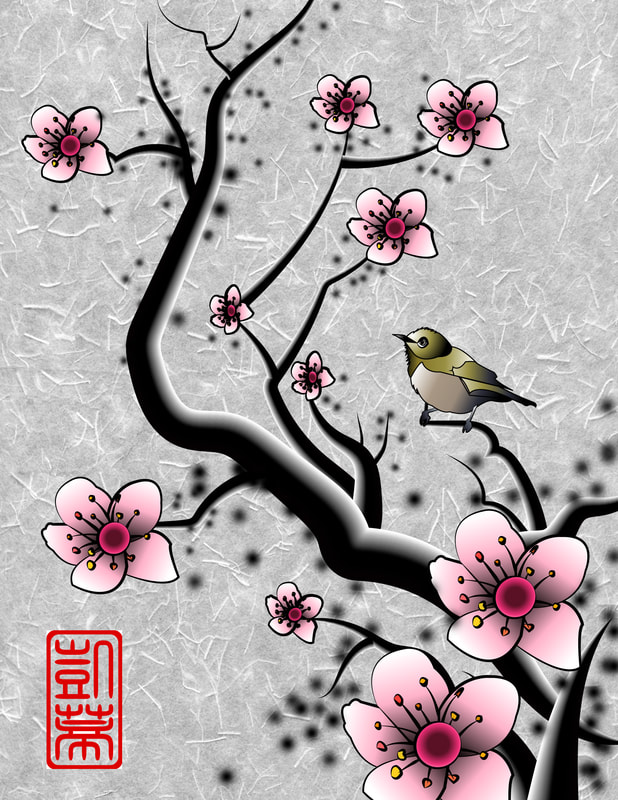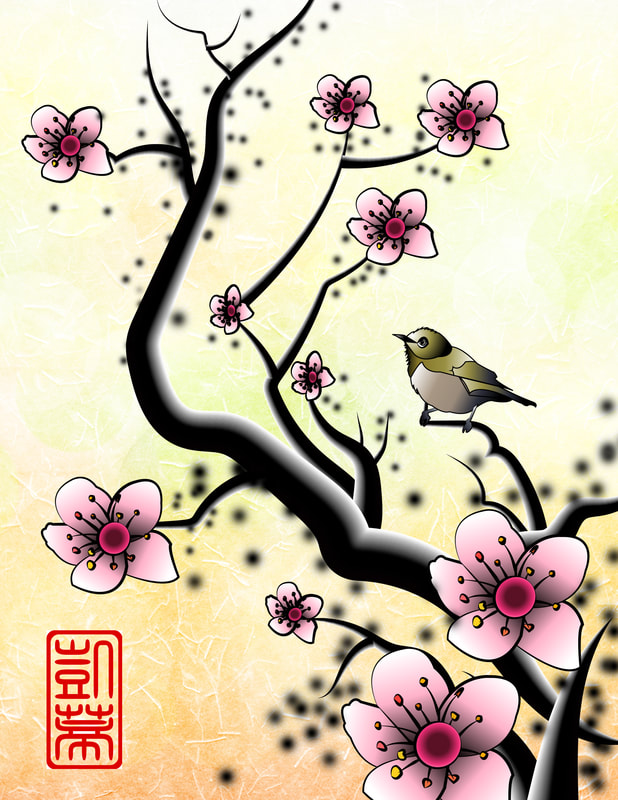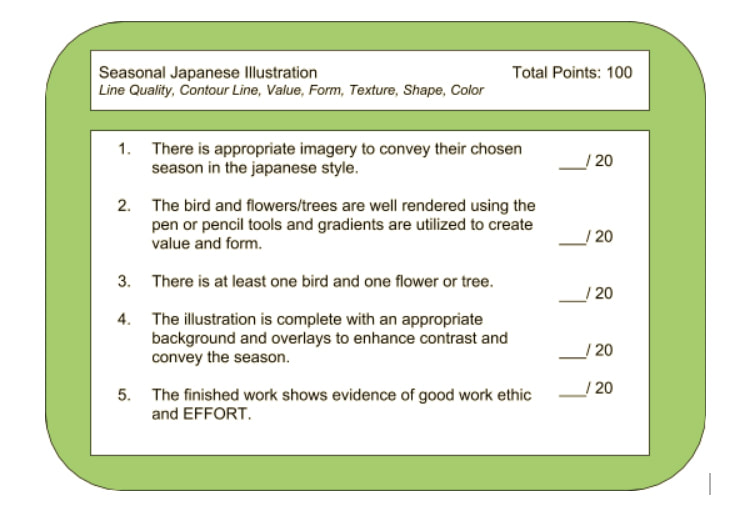|
Nature is incredibly important to Japanese culture and it can be best seen and expressed through their prints and their ink paintings.
Many Japanese art and crafts have decoration or shapes based on the natural world, reflecting the Shinto belief in the importance of the seasonal succession of seed time and harvest. Buddhism too teaches that people should try to achieve harmony with nature. Artists in Japan created meditations on the fleeting seasons of life and, through them, expressed essential truths about the nature of human experience. Japanese painters expressed not only their fondness for the natural cycle of the seasons but also captured an awareness of the inevitability of change, a fundamental Buddhist concept. Japanese artists of the Edo Period used their art to show a deep appreciation for the grace and beauty of birds and other subjects in nature. During this time, painting styles began to provide a sense of movement and a scenic perspective from the bird's view. The depiction of the seasonal shifts was also important to "Shinto" Japan's native belief system. |
|
Assignment # 1:
Assignment on Google Classroom under the classwork tab
Assignment on Google Classroom under the classwork tab
Assignment # 2
|
Seasonal Flowers and Birds in Japanese Art:
|
You are to create your own Japanese inspired illustration of a bird in a particular season using Adobe Photoshop and Adobe Illustrator. It must include the following:
|
| japanese_seasonal_illustration.pdf | |
| File Size: | 1143 kb |
| File Type: | |
Please reference the pdf tutorial above, and the video tutorial below. I will also be demonstrating all the different ways you can complete this assignment in class.
Also make sure all the project requirements are visible in the final work.
https://youtu.be/jHyVTeSUdXc
Also make sure all the project requirements are visible in the final work.
https://youtu.be/jHyVTeSUdXc
|
Assignment # 3:
Reflection Questions When you are done with your project, and it is in your google portfolio for grading, answer the following questions in the comment section underneath your slide:
|
